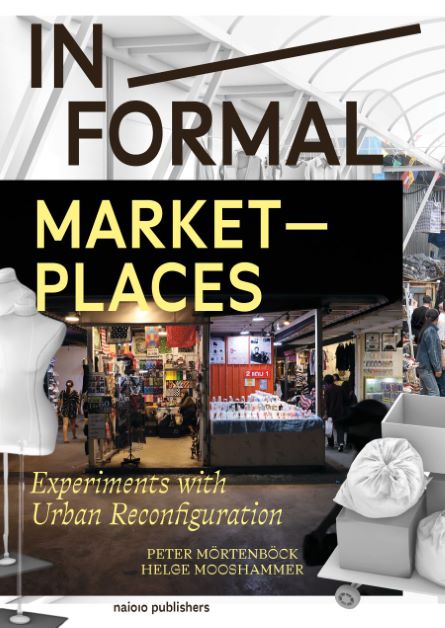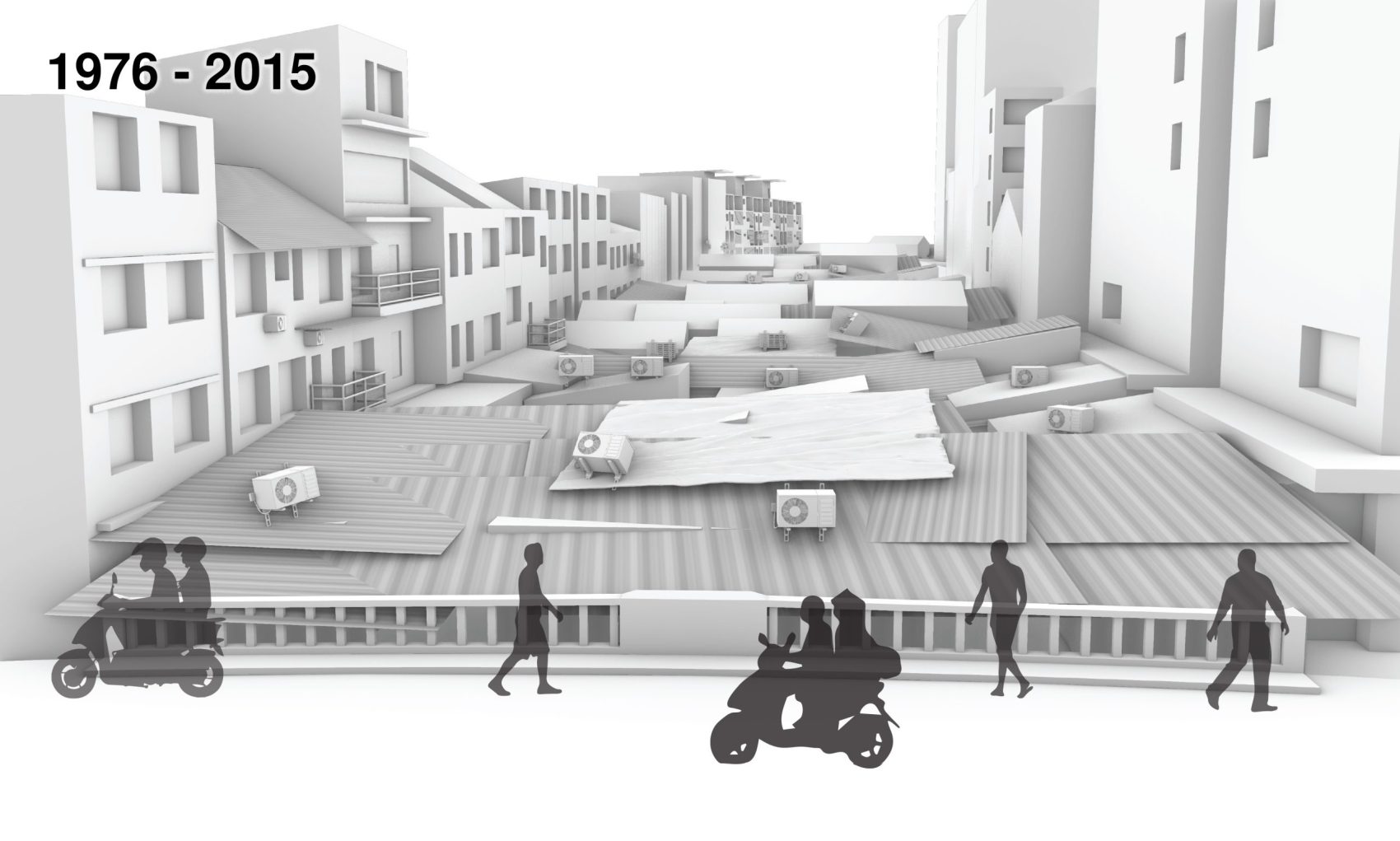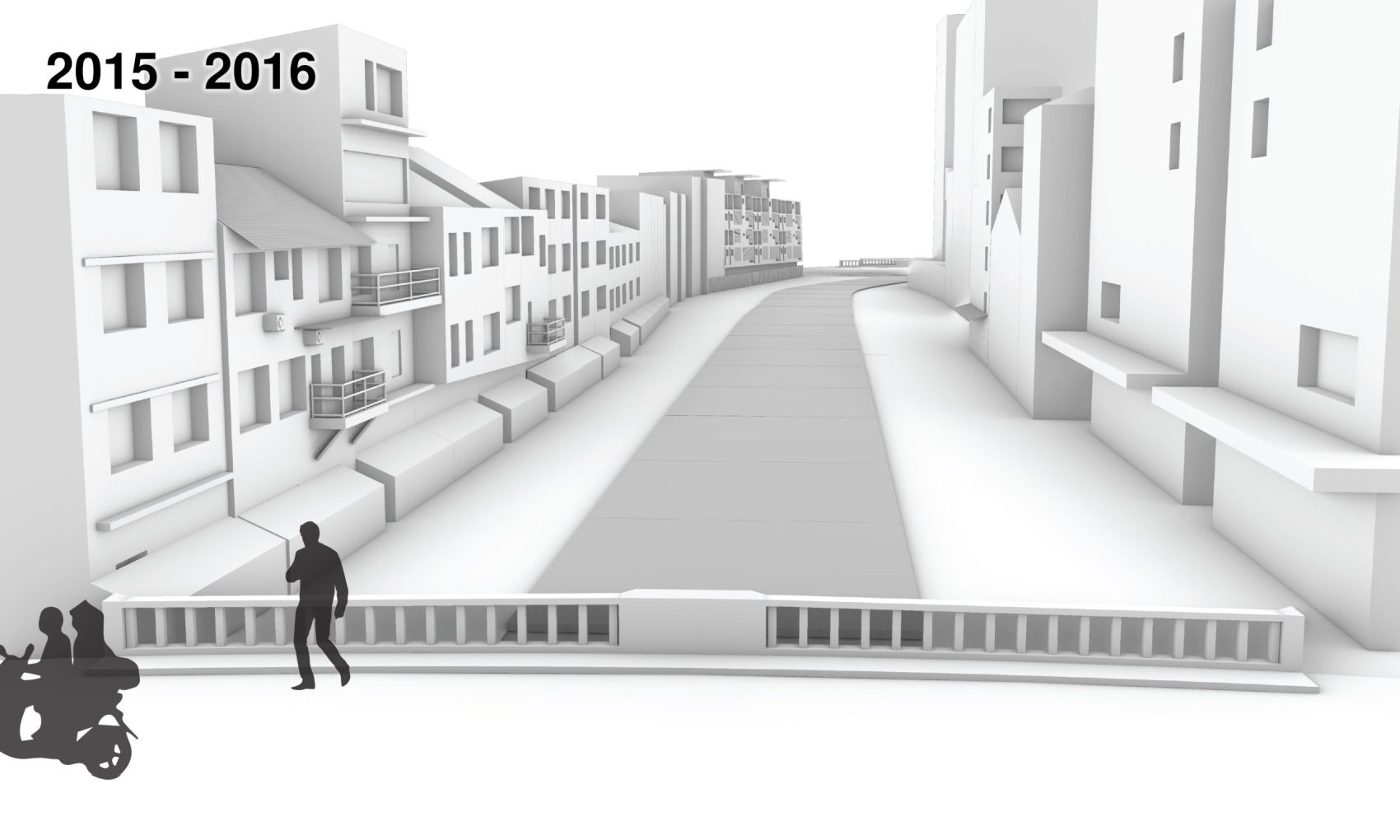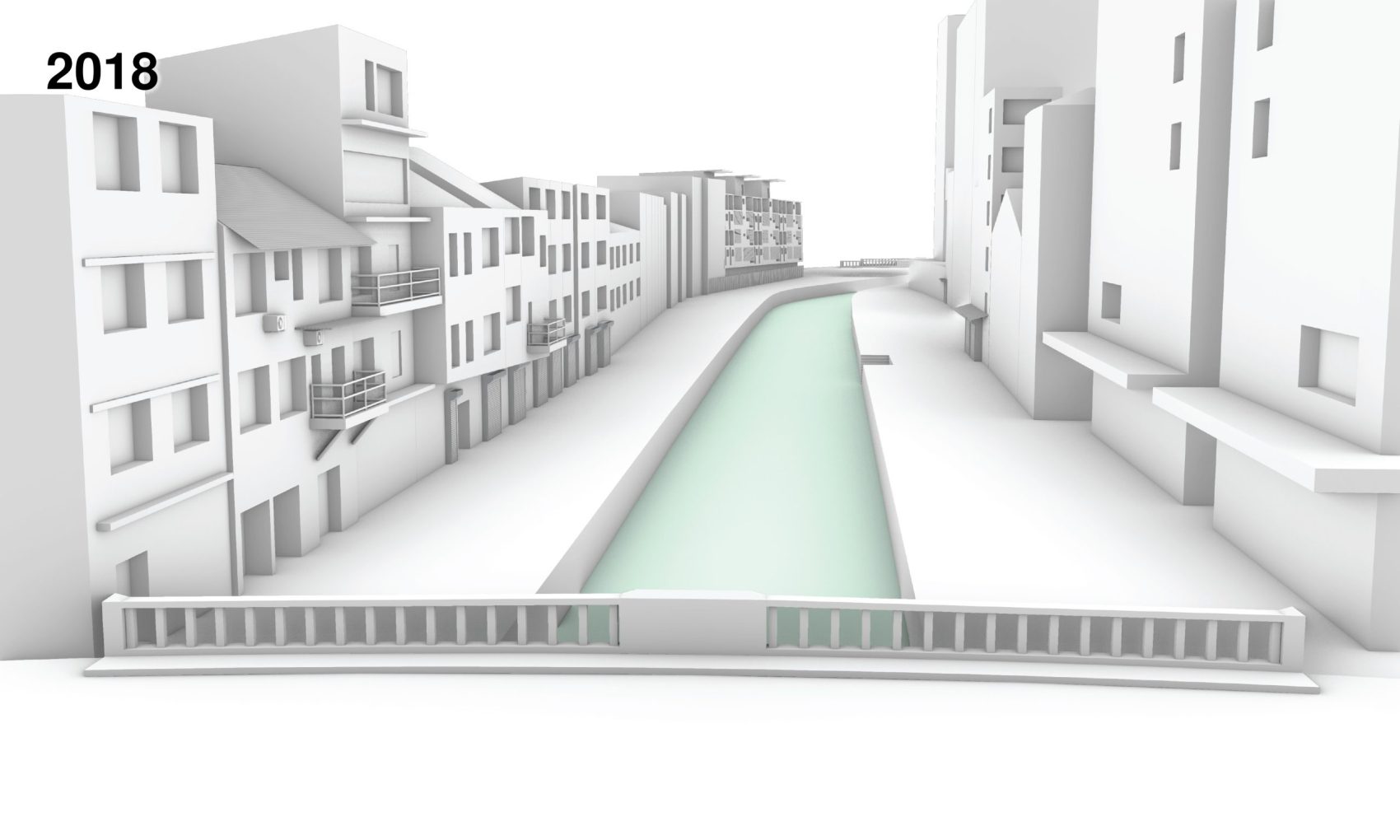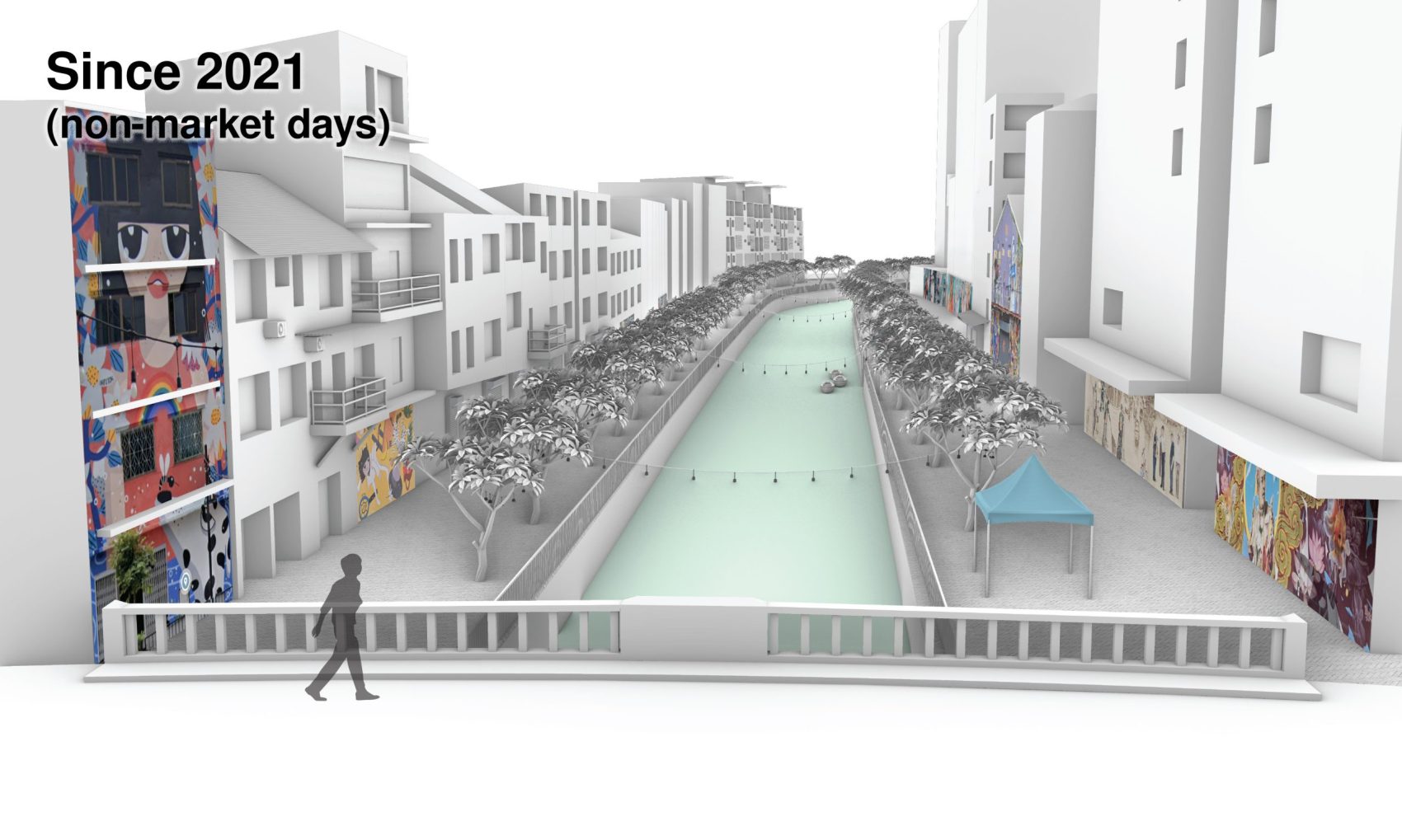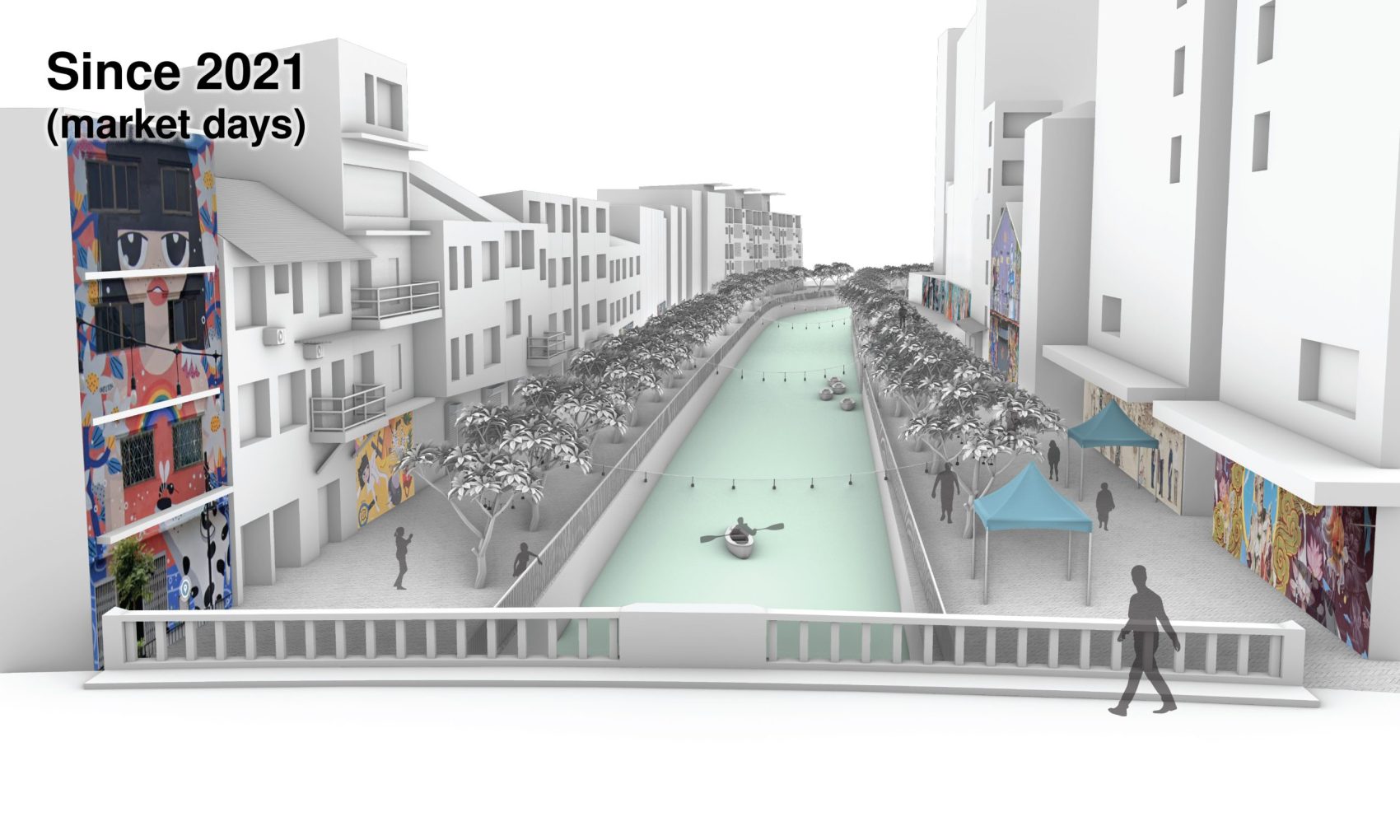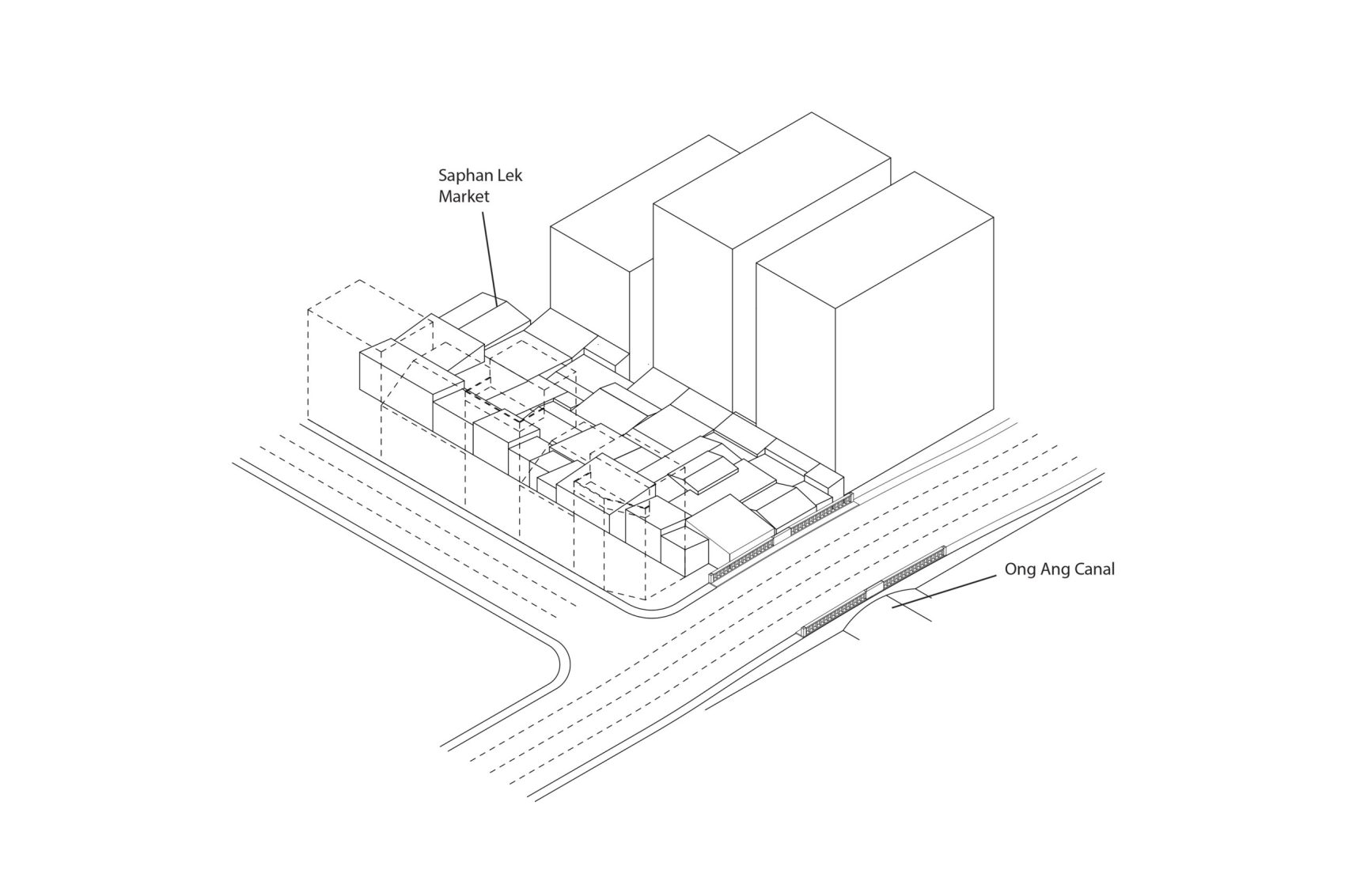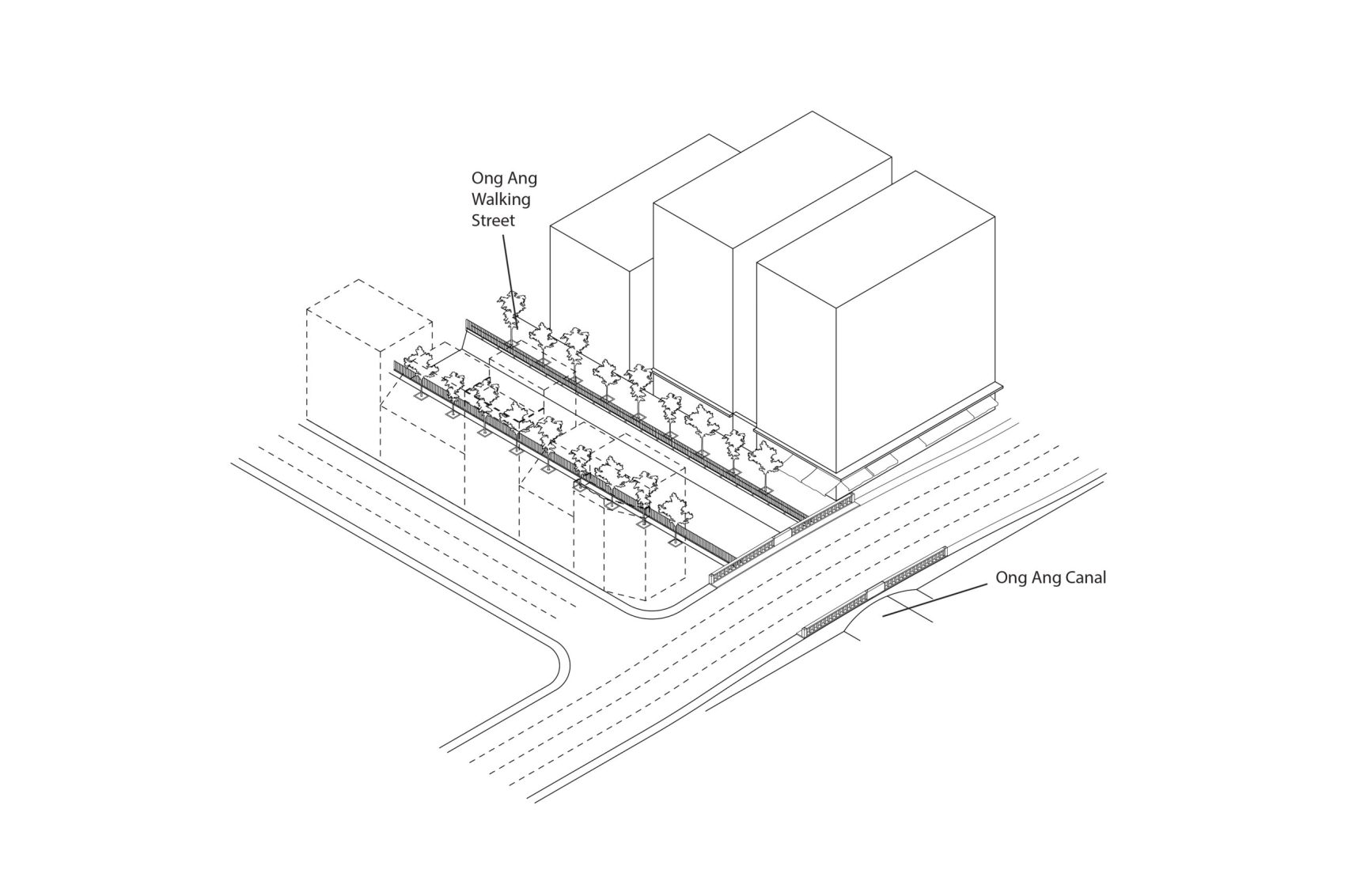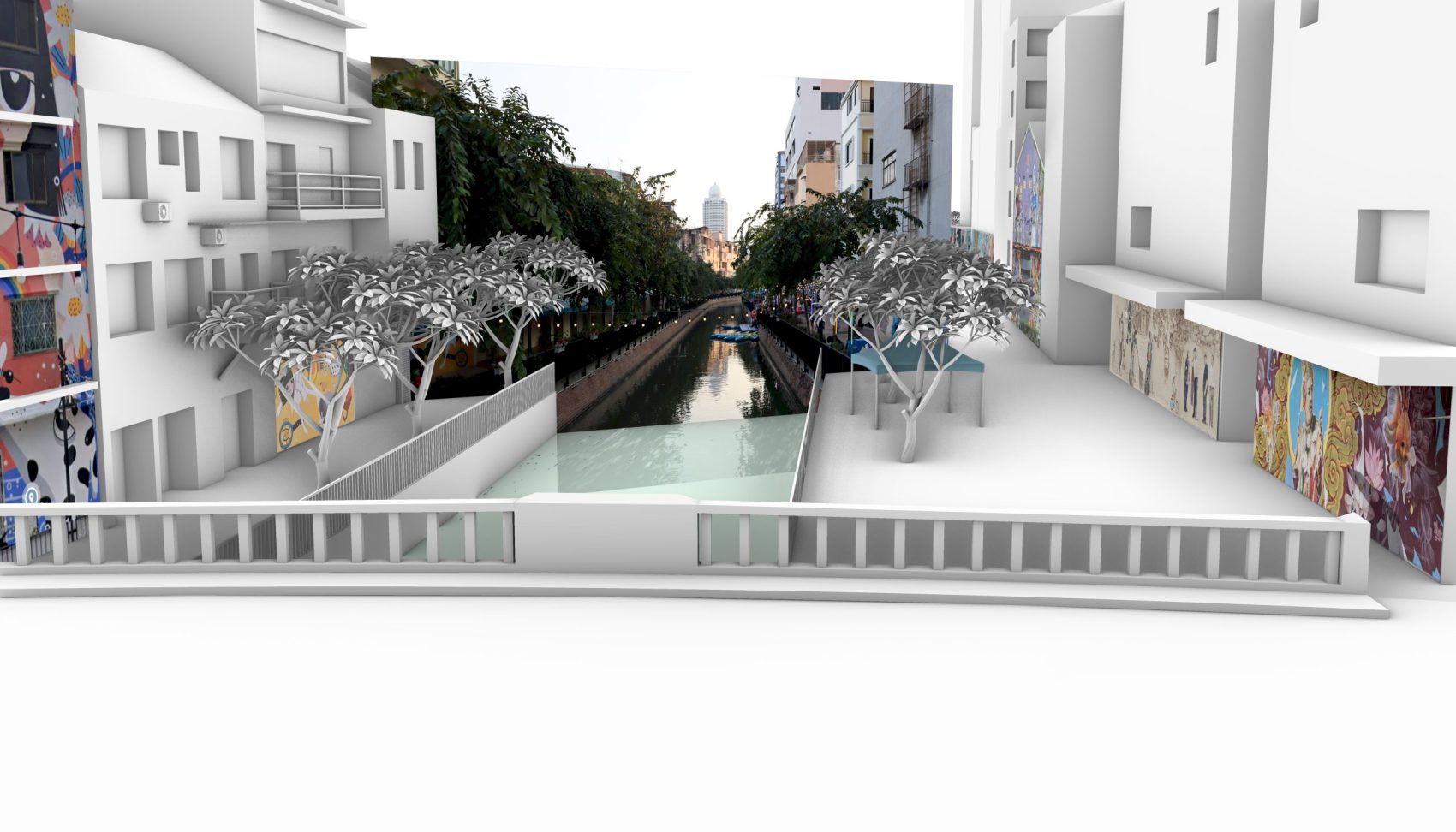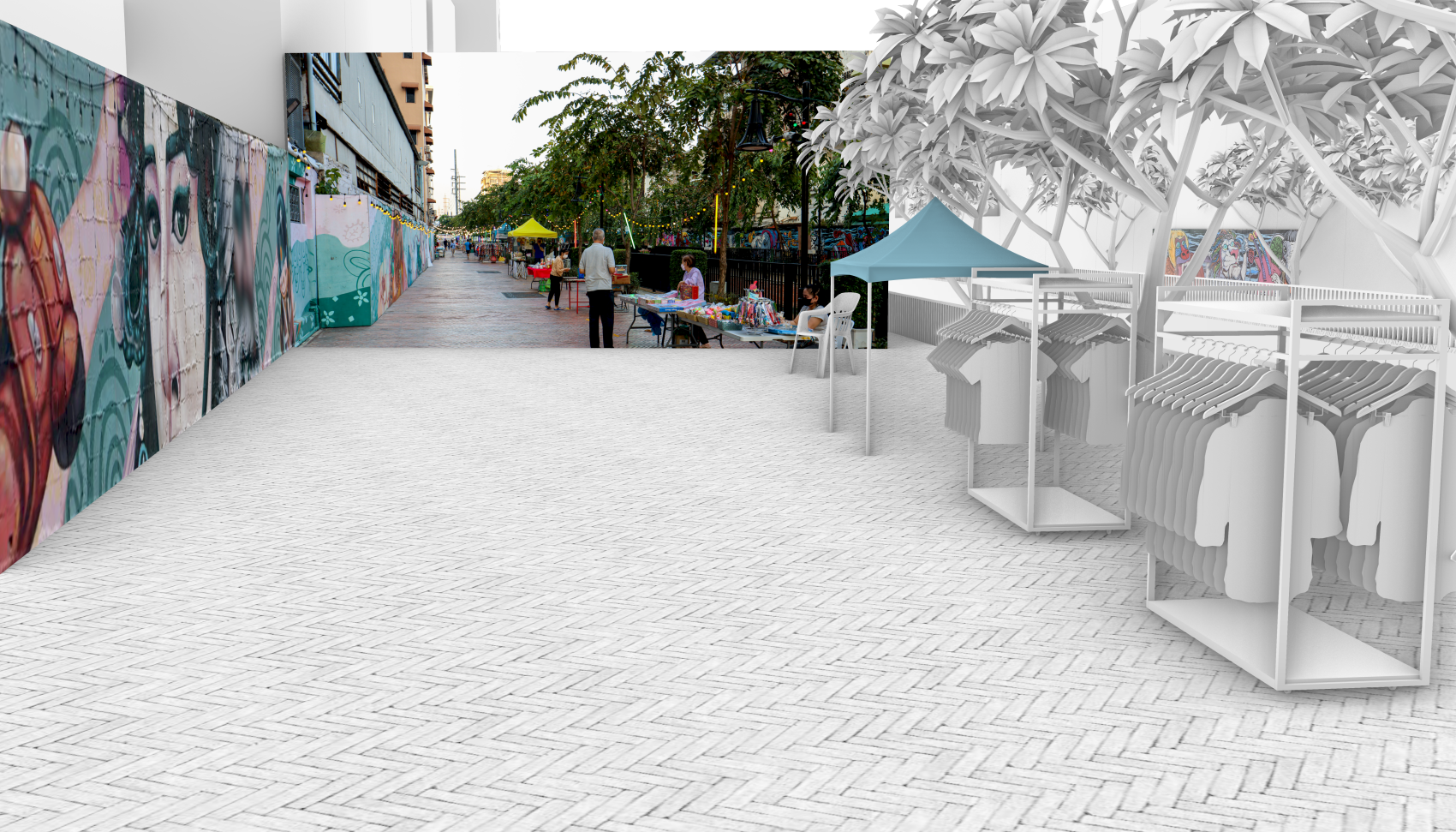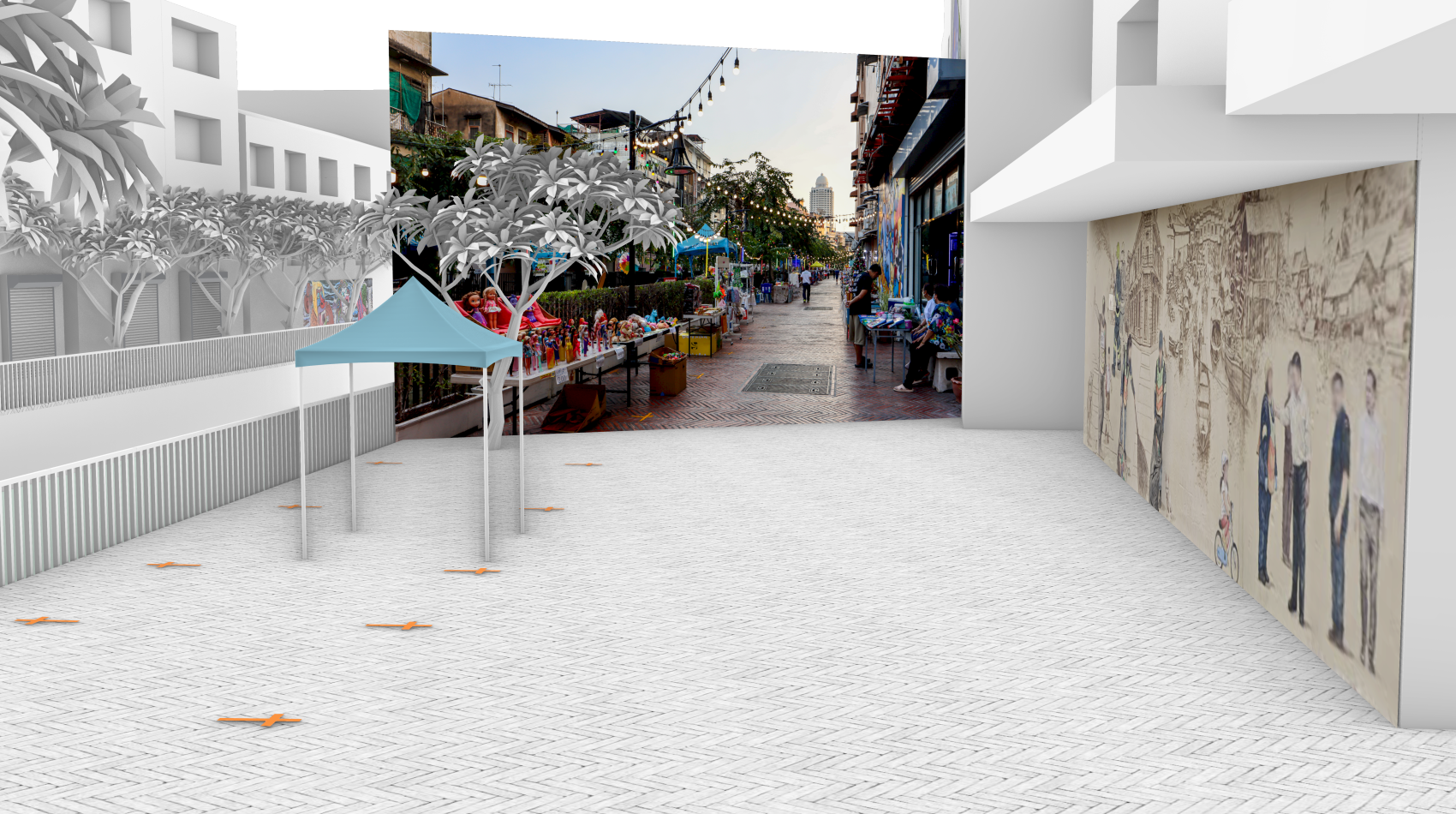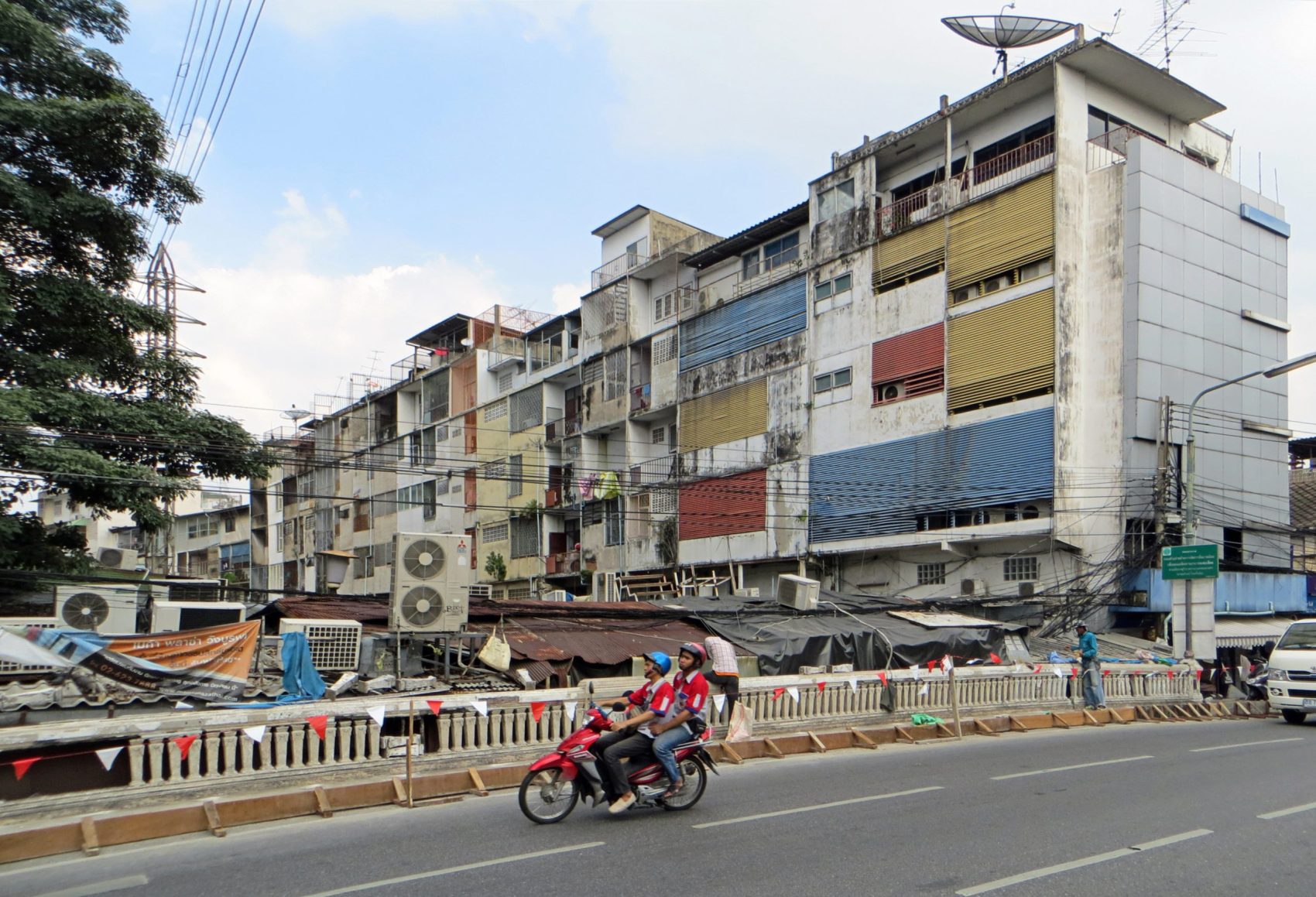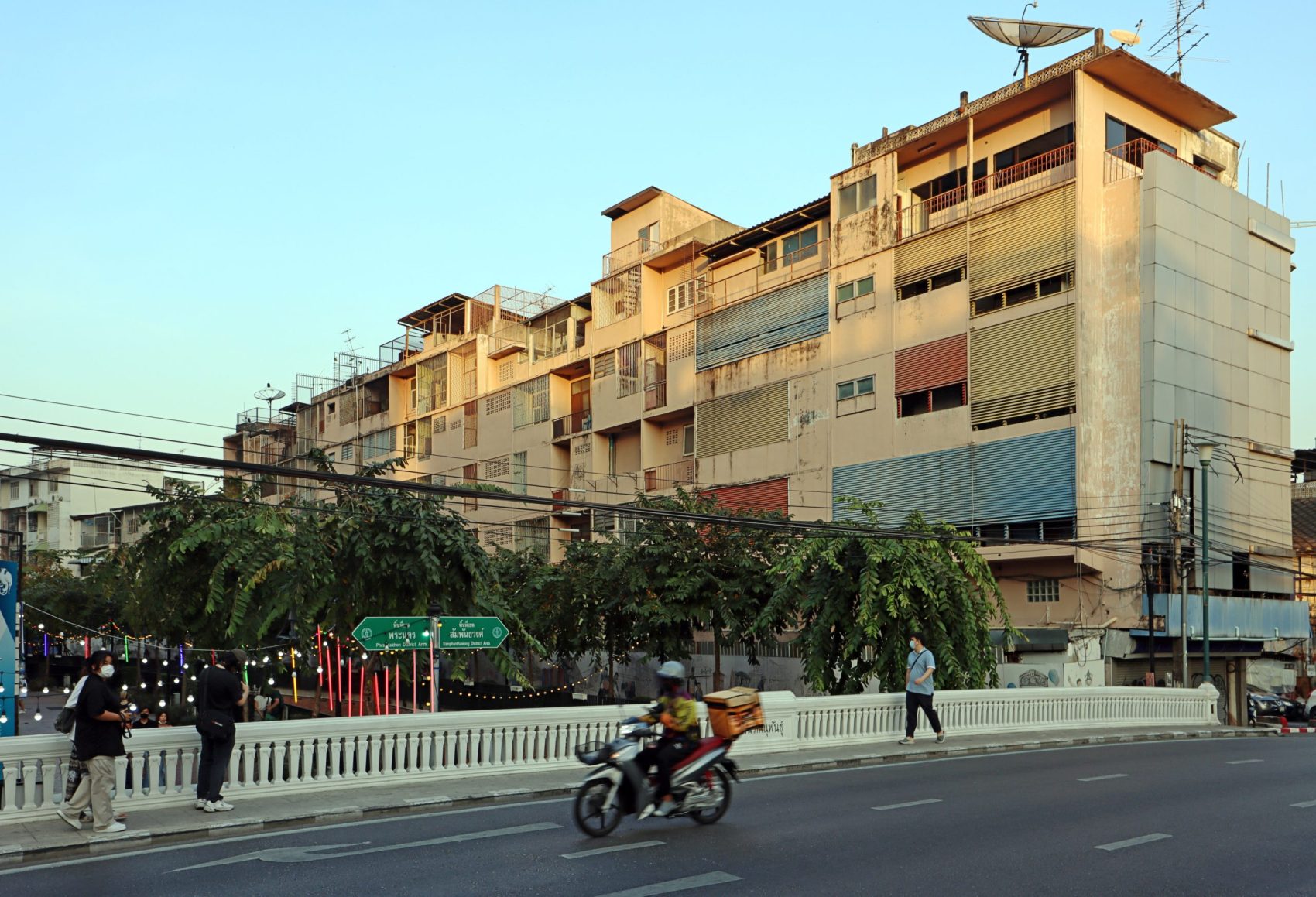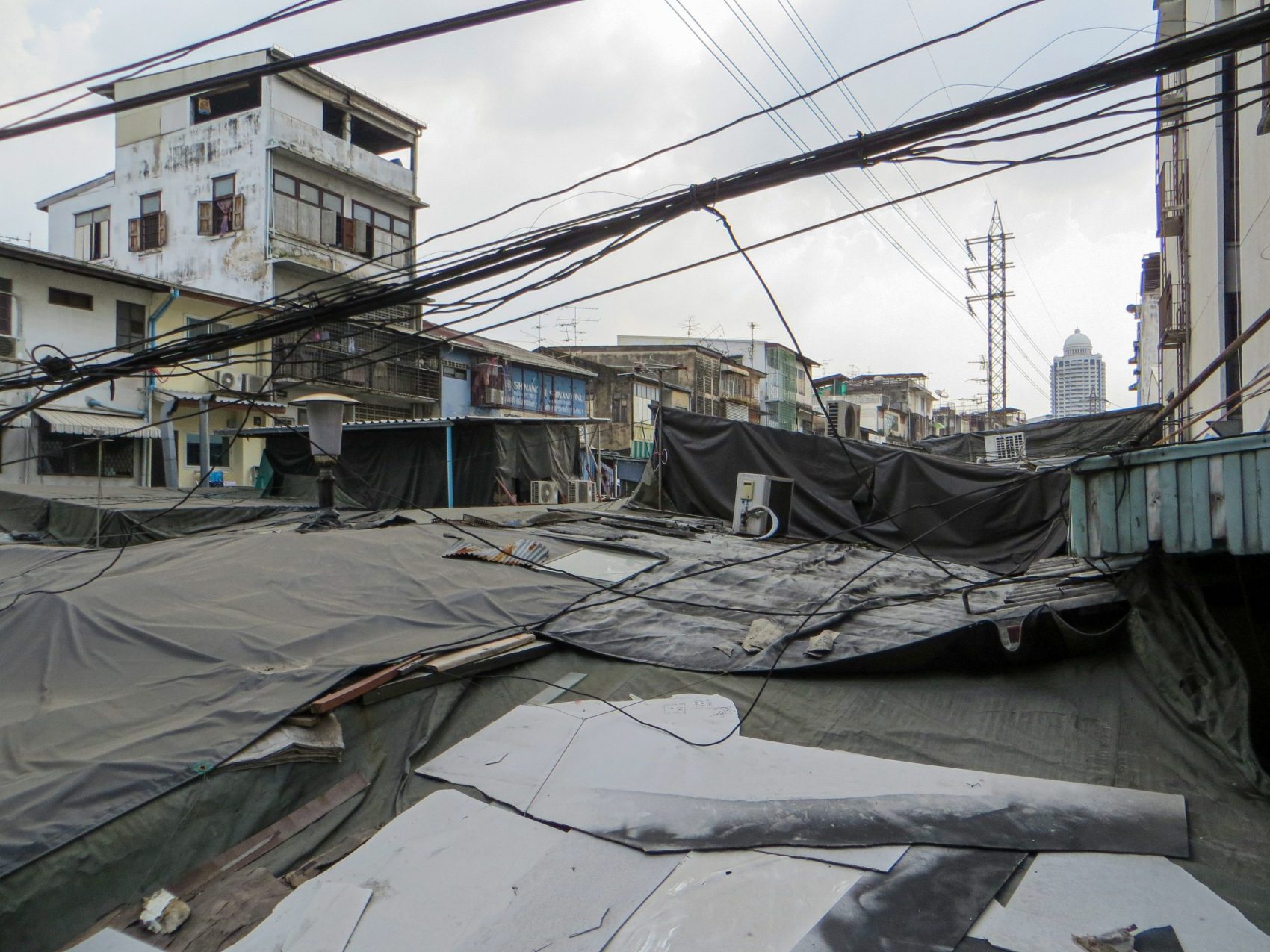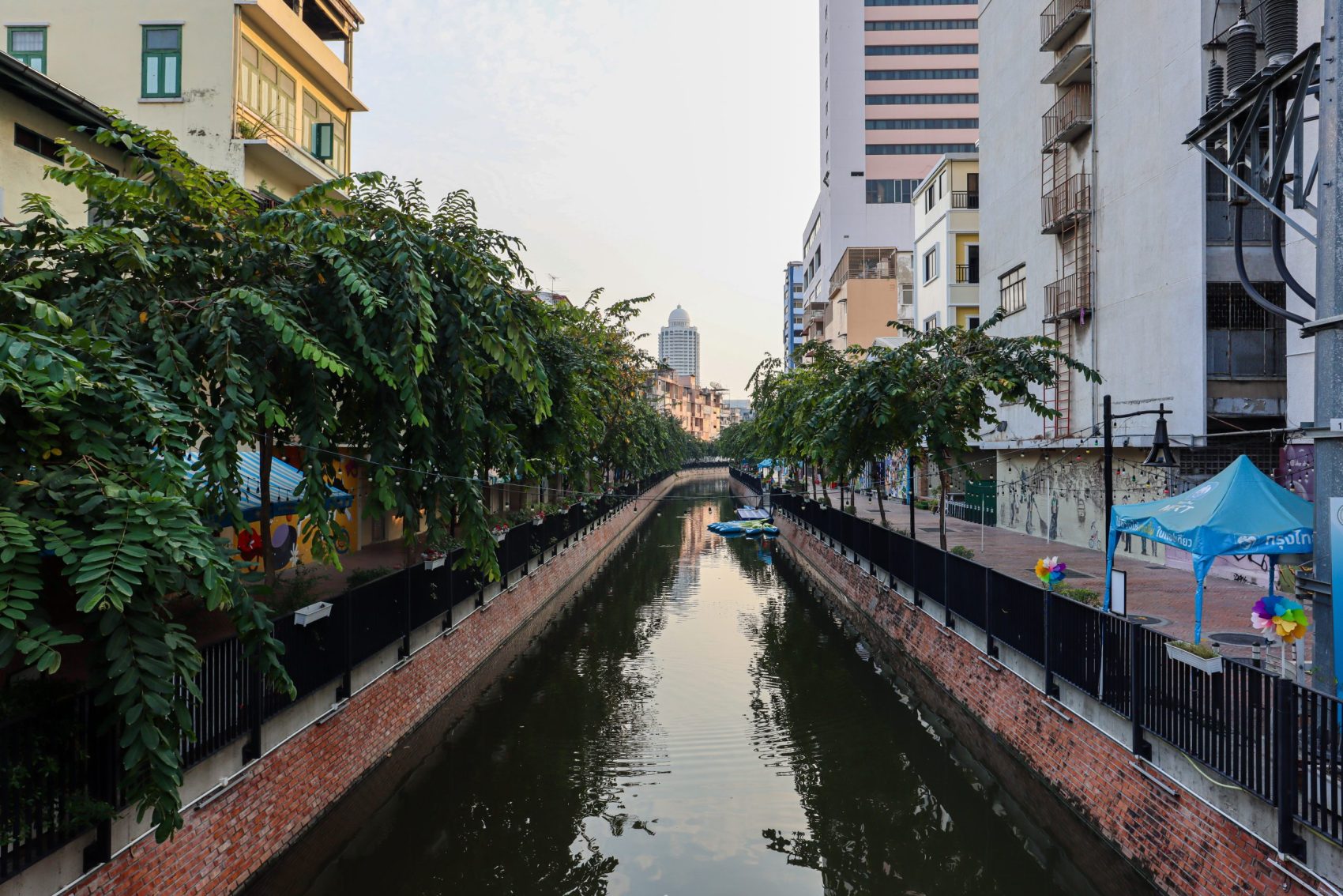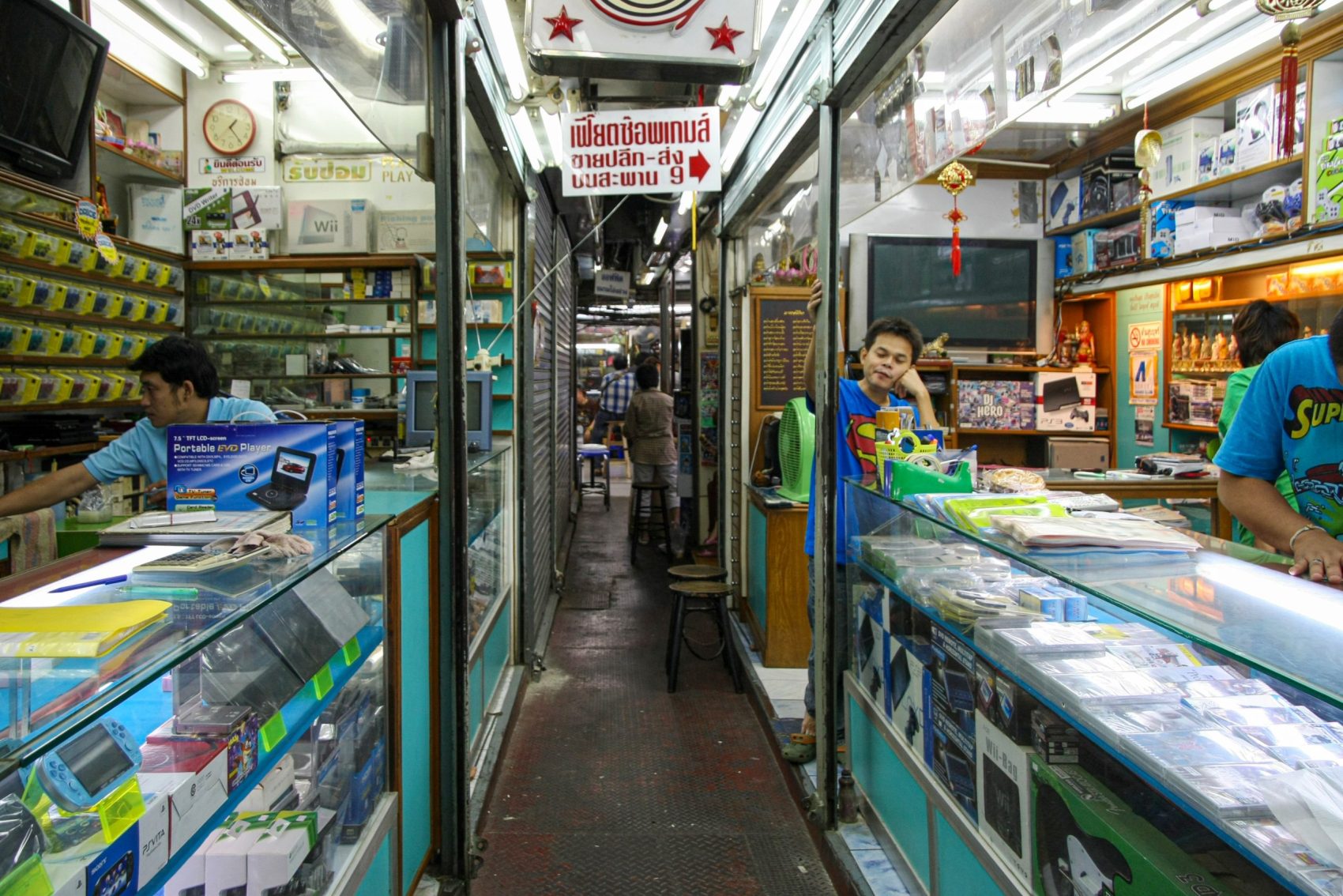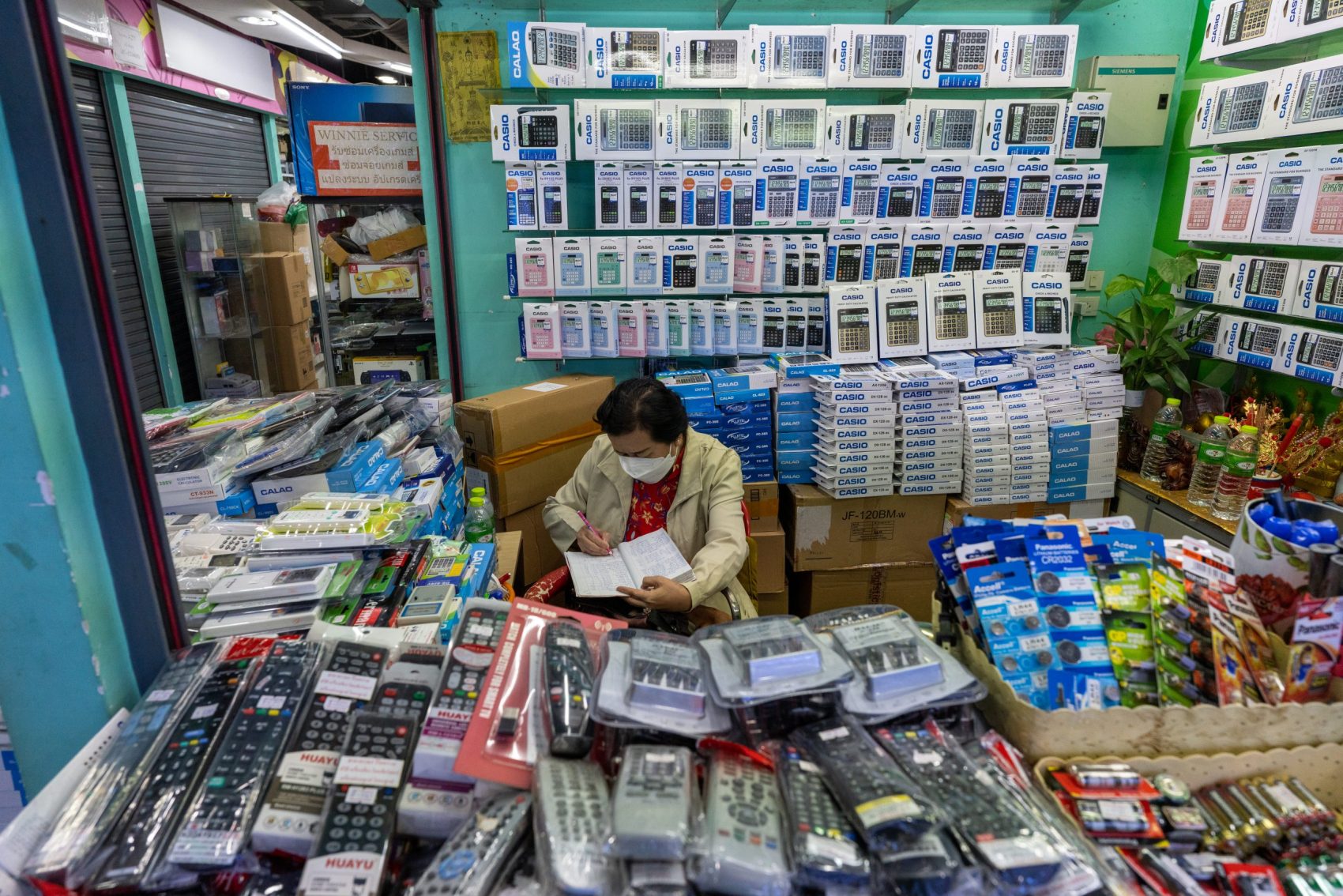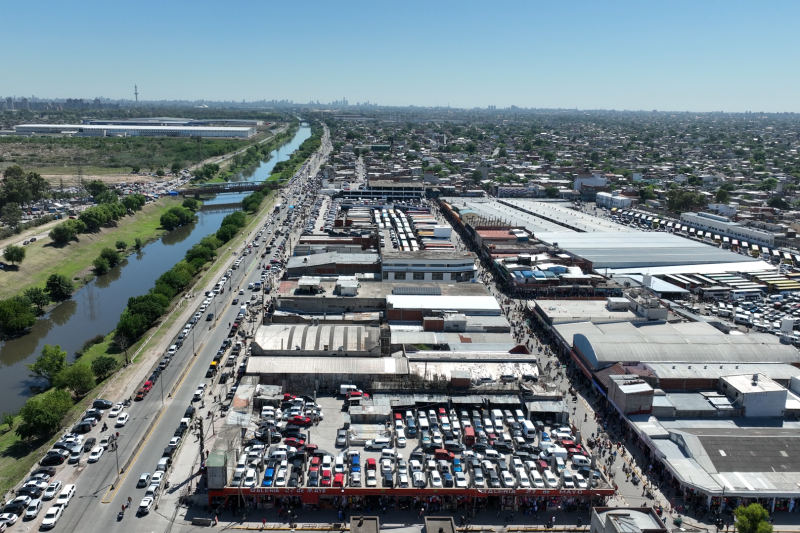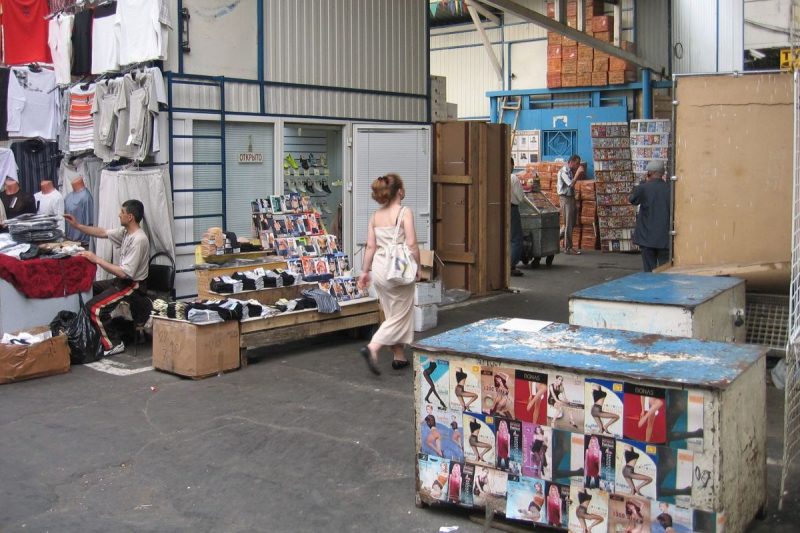- Forced Closure
- FWF
- 2018-2023
- Incorporating Informality
CASE STUDY: SAPHAN LEK
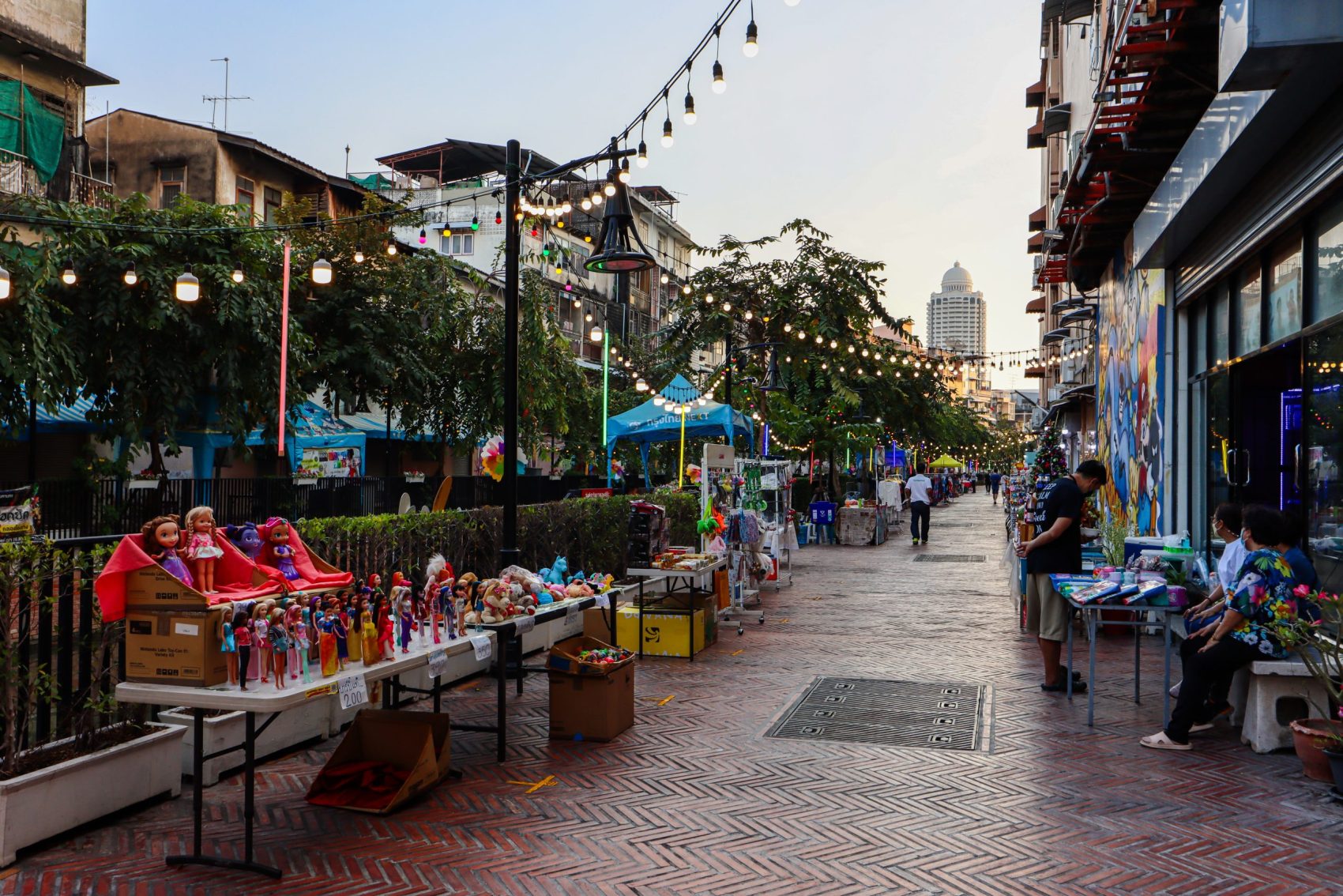
Ong Ang Walking Street, Bangkok, 2023
WATERWAYS, HERITAGE, AND THE POLITICS OF ‘GOOD’ COMMERCE IN BANGKOK
In March 2021, it was announced that Thailand would receive an award from the UN-Habitat Regional Office for Asia and the Pacific for its renovation project of Klong Ong Ang or the Ong Ang Canal in Bangkok. Until 2015, Klong Ong Ang, one of the oldest centres for trade in Bangkok, was the location of the Saphan Lek Market.
The Saphan Lek market was built atop the canal on stilts and consisted of densely packed shops where vendors sold counterfeit goods and toys. As a ‘red zone,’ police regularly raided shops and captured counterfeit and pirated products from the Saphan Lek Market. After surviving for decades in this neighbourhood despite eviction warnings, the it was dismantled in October 2015 by the Bangkok Metropolitan Government. Vendors were given only two weeks of notice before the eviction.
Several years after its demolition, the 2020 UN Asian Townscape Award celebrated the transformation of this once bustling market into a walking street, enforced by the Bangkok Metropolitan Administration (BMA). Where a dense labyrinth of shops once covered the canal, a wide, mostly empty brick sidewalk with large murals now defines the banks of Klong Ong Ang. Walking along the newly renovated canal market, open only Friday through Sunday, one encounters several vendors scattered along its banks. While some of these vendors include individuals who previously sold in the Saphan Lek market, most evicted vendors now trade in a mall just a block from the canal at Mega Plaza Saphan Lek, previously known as the Merry King Department Store. Since 2015, Mega Plaza Saphan Lek was taken over by Bawornpong Company, headed by Vallop Komolwisit the son of a controversial Thai-Chinese politician Chuwit Kamolwisit who grew up in Yaowarat.
Location(s): Bangkok, THAILAND
On-Site Collaborator:TRUDE LAURA RENWICK
VINEET DIWADKAR
Visualisations: BILAL ALAMELOVRO KONCAR-GAMULINJOANNA ZABIELSKA
Photography: PETER MÖRTENBÖCK
HELGE MOOSHAMMER
VINEET DIWADKAR
Results of this case study were published in:
Walking through Mega Plaza Saphan Lek, the mall is full of shop owners who once sold in the Saphan Lek market, creating a similar visual effect. Goods are piled up throughout the mall. In its back corners, boxes of goods are stacked, and one moves through dizzying aisles of anime figurines and toys. Although Mega Plaza Saphan Lek is a far cry from Bangkok’s most famous luxury malls, after paying little or no rent at Saphan Lek, rent at mega plaza is a whopping 10,000/12,000 THB per month ($290 to 350 US dollars per month).
At first glance, this forced closure of Saphan Lek and the opening of the Khlong Ong Ang Walking Street could either be considered a successful renovation or an example of the marketization of space. In Bangkok, street vending is a commercial practice that is increasingly incorporated by the Thai nation-state as a visual package of national identity to be sold to a global audience. The forced closure of the Saphan Lek market and the celebration of the Ong Ang Canal revitalization project as a symbol of Thai nationalism is a continuation of this tradition.
CONTRIBUTOR(S)
Trude Laura Renwick, PhD, uses ethnographic methods to examine issues of inequality, aesthetics and labour that surround the development of commercial and infrastructural space in Thailand and Southeast Asia.
